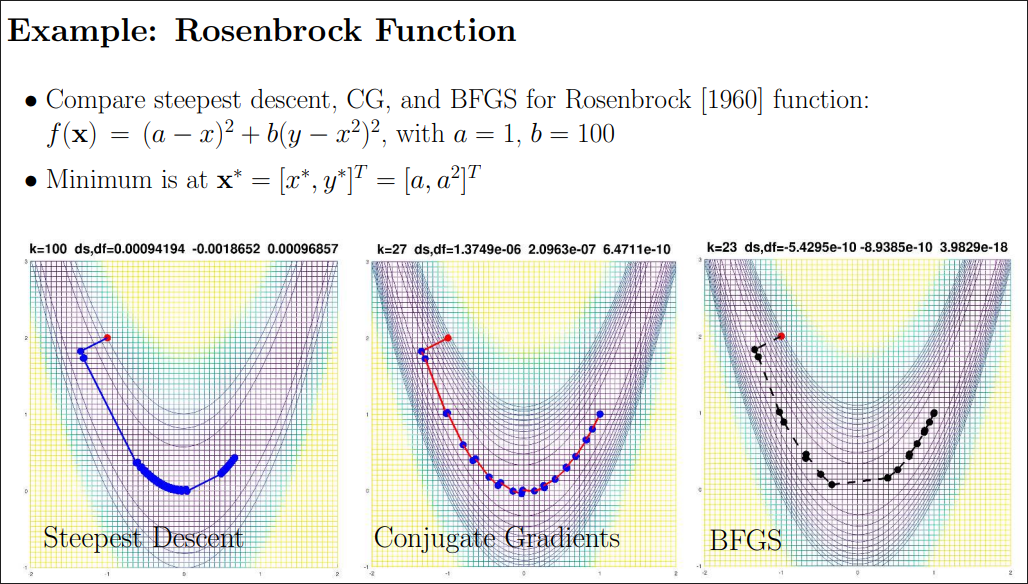Concept
the first part is same as Steepest Descent Method, but after find the new , we calculate next instead of finding steepest descent by
and
x0 = initial guess
g0 = \nabla f(x0)
s0 = g0
for k = 0, 1, 2,...
Choose αk to minimize f(xk + αk sk)
xk+1 = xk + αk sk
gk+1 = \nabla f(xk+1)
βk+1 = (g^Tk+1 gk+1)/(g^Tk gk)
sk+1 = gk+1 + βk+1sk
end
Conjugate Gradient Method is only different with Steepest Descent Method with , if we set constantly equal to , it will be same as Steepest Descent Method.
Cost
unlike Newton’s method, this one doesn’t need to calculate Hessian matrix nor , it only need to calculate gradient and line search.

Code
import numpy as np
from typing import Callable, Tuple
def backtracking_line_search(
f: Callable[[np.ndarray], float],
grad_f: Callable[[np.ndarray], np.ndarray],
x: np.ndarray,
d: np.ndarray, # direction, usually - \nabla grad_f
alpha_init: float = 1.0,
rho: float = 0.5, # back trace factor
c: float = 1e-4 # Armijo cond
) -> float:
alpha = alpha_init
f_x = f(x)
grad_dot_d = np.dot(grad_f(x), d) # \nabla f(x)^Td
# Armijo cond: f(x + α*d) \leqd f(x) + c*α* \nabla f(x)^Td
while f(x + alpha * d) > f_x + c * alpha * grad_dot_d:
alpha *= rho # backtrace
return alpha
def conjugate_gradient(
f: Callable[[np.ndarray], float],
grad_f: Callable[[np.ndarray], np.ndarray],
x0: np.ndarray,
max_iter: int = 1000,
tol: float = 1e-6
) -> Tuple[np.ndarray, float, int]:
x = x0.copy()
n = len(x)
g = grad_f(x)
d = -g.copy()
iterations = 0
for i in range(max_iter):
if np.linalg.norm(g) < tol:
break
alpha = backtracking_line_search(f, grad_f, x, d)
x_new = x + alpha * d
g_new = grad_f(x_new)
beta = np.dot(g_new, g_new) / np.dot(g, g)
d = -g_new + beta * d
x = x_new
g = g_new
iterations += 1
# reset direction
if (i + 1) % n == 0:
d = -g.copy()
return x, f(x), iterations